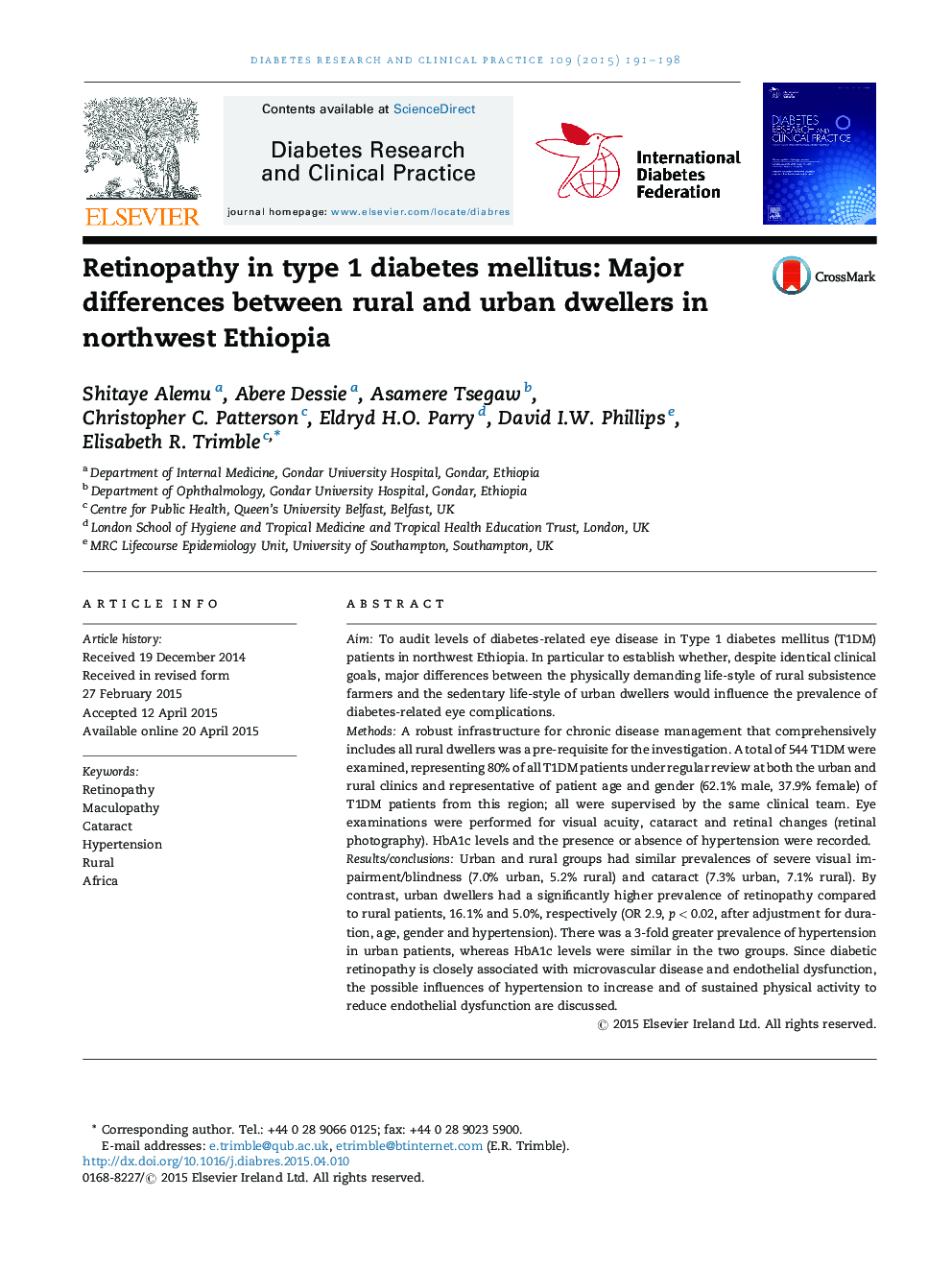| Article ID | Journal | Published Year | Pages | File Type |
|---|---|---|---|---|
| 5899149 | Diabetes Research and Clinical Practice | 2015 | 8 Pages |
AimTo audit levels of diabetes-related eye disease in Type 1 diabetes mellitus (T1DM) patients in northwest Ethiopia. In particular to establish whether, despite identical clinical goals, major differences between the physically demanding life-style of rural subsistence farmers and the sedentary life-style of urban dwellers would influence the prevalence of diabetes-related eye complications.MethodsA robust infrastructure for chronic disease management that comprehensively includes all rural dwellers was a pre-requisite for the investigation. A total of 544 T1DM were examined, representing 80% of all T1DM patients under regular review at both the urban and rural clinics and representative of patient age and gender (62.1% male, 37.9% female) of T1DM patients from this region; all were supervised by the same clinical team. Eye examinations were performed for visual acuity, cataract and retinal changes (retinal photography). HbA1c levels and the presence or absence of hypertension were recorded.Results/conclusionsUrban and rural groups had similar prevalences of severe visual impairment/blindness (7.0% urban, 5.2% rural) and cataract (7.3% urban, 7.1% rural). By contrast, urban dwellers had a significantly higher prevalence of retinopathy compared to rural patients, 16.1% and 5.0%, respectively (OR 2.9, p < 0.02, after adjustment for duration, age, gender and hypertension). There was a 3-fold greater prevalence of hypertension in urban patients, whereas HbA1c levels were similar in the two groups. Since diabetic retinopathy is closely associated with microvascular disease and endothelial dysfunction, the possible influences of hypertension to increase and of sustained physical activity to reduce endothelial dysfunction are discussed.
